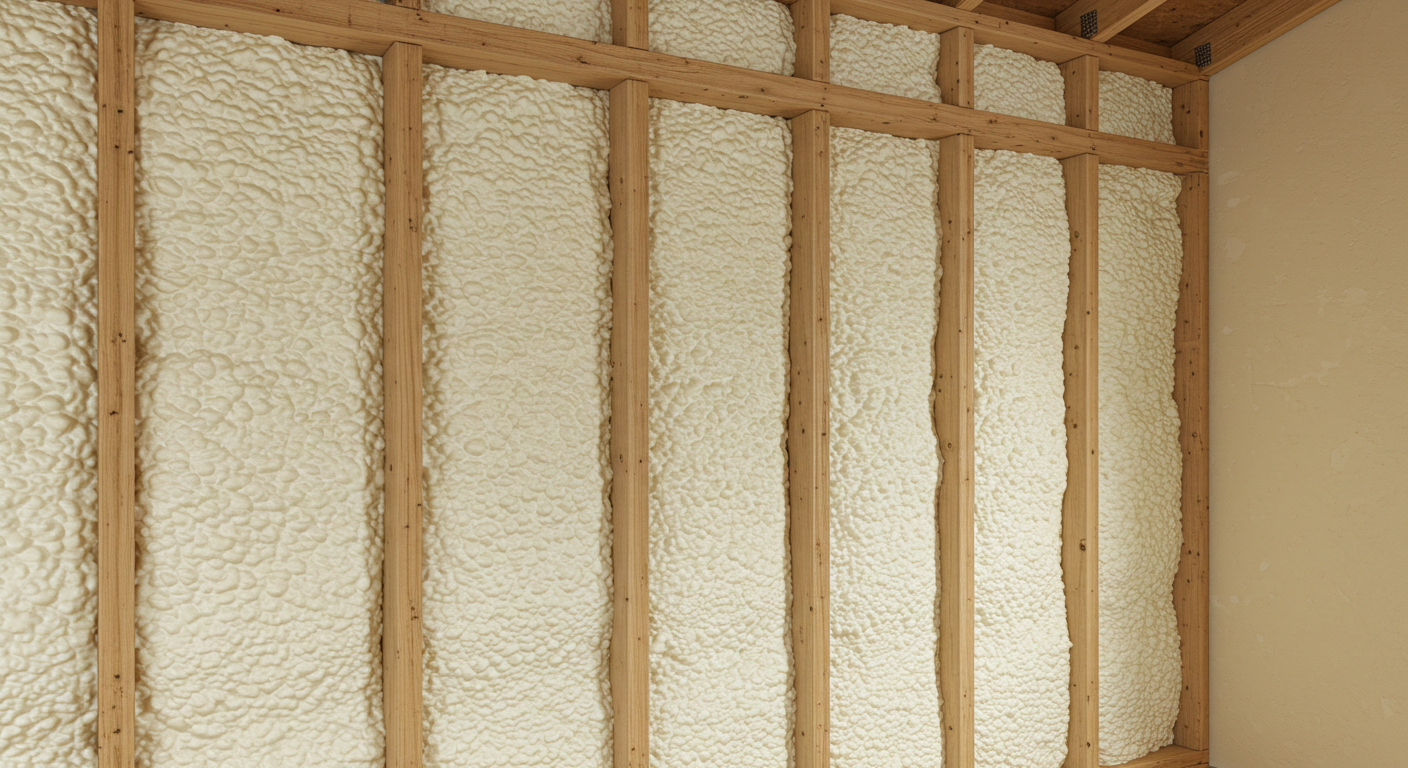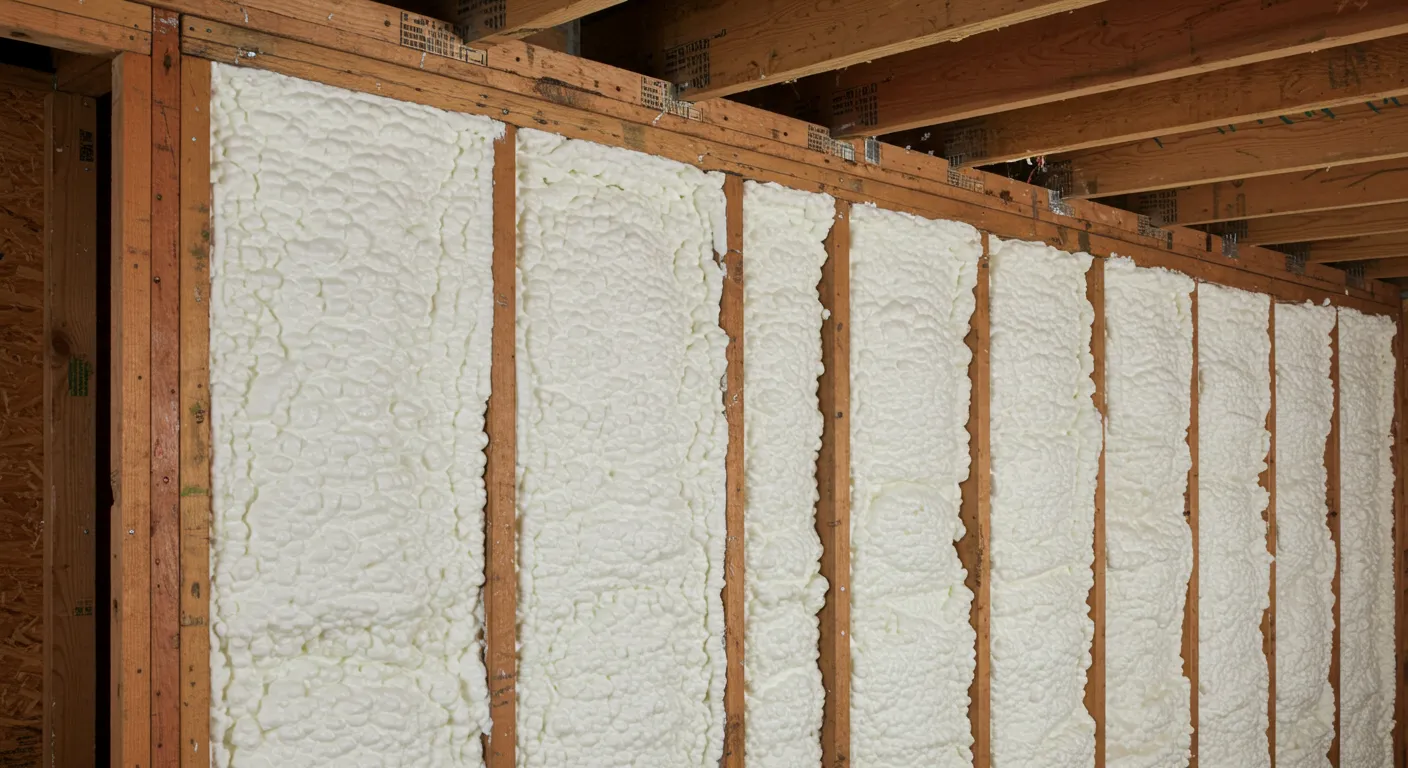
Spray foam insulation offers one of the most effective methods for sealing homes in Marietta, OH, against moisture intrusion, air leakage, and energy loss. The region’s seasonal temperature swings, with cold winters and hot, humid summers, demand insulation that delivers consistent performance across varying conditions. Spray foam insulation adheres directly to surfaces, filling cracks and gaps to reduce thermal bridging and improve energy efficiency.
This article presents a clear breakdown of why spray foam performs well in Marietta’s climate. All information is grounded in field experience and industry standards. Technical specifications, comparison tables, and common-sense advice provide the details homeowners need to make an informed decision.
Ohio Valley Spray Foam brings firsthand expertise from residential and commercial projects throughout Washington County and surrounding areas. Every insight shared here reflects years of practical work under local building conditions.
Marietta sees high humidity, rainfall, and significant heating and cooling demands. Spray foam maintains consistent thermal resistance regardless of moisture levels, unlike traditional materials that degrade when wet. This stability results in fewer energy losses during both summer and winter.
| Property | Spray Foam (Closed Cell) | Spray Foam (Open Cell) | Fiberglass Batt | Blown-in Fiberglass |
|---|---|---|---|---|
| R-Value per Inch | 6.0-7.0 | 3.5-3.8 | 2.9-3.8 | 2.2-2.9 |
| Air Sealing | Excellent | Good | Poor | Moderate |
| Moisture Resistance | High | Moderate | Low | Low |
| Mold Growth Resistance | Yes | Yes | No | No |
| Longevity (Years) | 30+ | 20+ | 10-15 | 10-15 |
| Installation Complexity | Professional Only | Professional Only | Moderate | Moderate |
Bonus Tip: In older Marietta homes with irregular framing, spray foam conforms more effectively to uneven cavities than rigid insulation or fiberglass batts.
Open-cell and closed-cell spray foams both help reduce humidity migration through walls and ceilings. Closed-cell foam acts as a vapor retarder, which is especially important in crawl spaces and basements common features in Marietta homes where condensation and mold can be a concern.
| Foam Type | Vapor Retarder | Water Absorption Rate | Application Suitability |
|---|---|---|---|
| Closed-cell | Yes | <2% | Basements, crawlspaces, roofs |
| Open-cell | No | >5% | Interior walls, attic spaces |
U.S. Department of Energy data shows air leaks account for 25-40% of energy use in heating and cooling a typical home (DOE, 2023). Eliminating this with spray foam reduces HVAC strain and costs.
Bonus Tip: Closed-cell foam increases structural rigidity, adding wind resistance—a practical advantage during Southeast Ohio’s storm season.

Up to 30 years or more when properly installed and maintained.
Once cured, spray foam is inert and does not release VOCs. Installation must be done with proper ventilation and by professionals.
Yes, especially open-cell foam, which provides excellent sound dampening in walls and floors.
Yes. It adheres to wood, metal, and masonry surfaces, making it viable for most structures.
Ohio Valley Spray Foam provides focused insulation options relevant to the local environment:
Contact Ohio Valley Spray Foam to learn how professional insulation can improve energy performance and comfort in your home.
Phone: (740) 373-3626 Email: [email protected]
Closed-cell foam performs best in areas with high humidity due to its low permeability and resistance to water absorption.
No. Professional installation is necessary to meet safety codes and achieve the correct expansion and curing.
Yes. Improved energy efficiency and air sealing can increase buyer interest and appraisal value.
Not under normal conditions. Inspect for pest damage or construction-related wear during renovations.